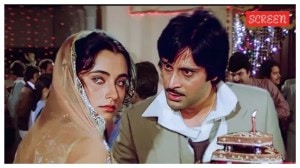‘Iran zeroing in on nuke bomb’
After more than a decade of working behind layers of front companies and in hidden laboratories, Iran appears to be in the late stages of de...

After more than a decade of working behind layers of front companies and in hidden laboratories, Iran appears to be in the late stages of developing the capacity to build a nuclear bomb. Iran insists that like many countries it is only building commercial nuclear reactors to generate electricity for homes and factories.
‘‘Iran’s efforts in the field of nuclear technology are focused on civilian application, nothing else,’’ President Mohammad Khatami said in February. ‘‘This is the legitimate right of Iran.’’ But an investigation by the Los Angeles Times — drawing on previously secret reports, international officials, experts, Iranian exiles and sources in Europe and West Asia — uncovered evidence that Iran’s program masks a plan to become the world’s next nuclear power.
Technology and scientists from Russia, China, N Korea and Pakistan have propelled Iran’s nuclear program much closer to a bomb than Iraq. No one is certain when Iran might produce its first atomic weapon. Some experts said two or three years; others believe the government has probably not given a go-ahead. But it is clear that Iran is moving purposefully and rapidly toward acquiring the capability.
Among the findings: A report prepared by France in May concluded that Iran is close to having enriched uranium or plutonium for a bomb. The French warned other governments to exercise ‘‘serious vigilance on exports to Iran and Iranian front companies,’’ according to a copy of the report.
Samples of uranium taken by UN inspectors in Iran in June tested positive for enrichment levels high enough to be consistent with an attempt to build a nuclear weapon, according to a foreign intelligence officer and an American diplomat.
Iran is concealing several weapons research laboratories and evidence of past activity at a plant disguised as a watch-making factory in a Tehran suburb. In June, UN inspectors were refused access to two large rooms and barred from testing samples at the factory, called Kalaye Electric Co. Tehran secretly imported 1.8 tons of nuclear material from China in 1991 and processed some of it to manufacture uranium metal, which would be of no use in its commercial program but would be integral to weapons production.
In 1989, Pakistani generals had offered to sell Iran nuclear weapons technology. ‘‘Pakistan’s role was bigger from the beginning than we thought,’’ said a West Asian intelligence official. North Korean military scientists — monitored entering Iranian nuclear facilities — are believed to be assisting on the design of a nuclear warhead.
IAEA officials hope to have a clearer picture of Iran’s nuclear program by September 8, when a report to the board is due. The Iranian Foreign Ministry did not respond to requests for interviews or written questions for this article. Iran has long contended that it plans to build six civilian reactors to generate electricity for its growing population of 65 million. Ministry spokesman Hamid Reza Asefi said allegations that Iran is concealing a weapons program are ‘‘poisonous and disdainful rumours’’ spread by US.
Iran maintains it wants to develop its own nuclear fuel-making capability, a position that has roused suspicions. Iran agreed not to produce nuclear arms when it signed Nuclear Nonproliferation Treaty in 1970, which opened the door for it to acquire civilian reactors. The treaty does not prohibit Iran from possessing enriched uranium but requires it to submit its nuclear facilities to monitoring. (LAT-WP)
Photos



- 01
- 02
- 03
- 04
- 05



























